Biology in France XIX. century
Introduction
The changes brought about by the French revolution led to the 18th century. At the end of the 20th century new fields of knowledge were opened. Then these new areas would be expanded by Europe by Napoleonic imperialist policy. However, the spread of these new concepts had common obstacles in many places and many times, and innovators had to make their own and five to expand their ideas.

Therefore, given the atmosphere in France, we should not be surprised that the new roads found the greatest ease and support. Therefore, French scientists, especially the XVIII. Assuming the master lines of 20th century thought and developing the path of inductive method, they were able to obtain more than one surprising achievement.
XVIII. Already in the 18th century, some scientific schools saw the dawn of the new era and even dared to formulate new basic hypotheses. But, leaving aside an appreciable or different intuition, the XIX. The 20th century should come to lay the solid foundations of modern science. There are a thousand reasons for this (especially sociological), but if we had to mention one is the professionalization of research and, so to speak, its socialization (that is, leaving the nobility or the dilettantes and integrating into the universities). This, coupled with improved technical means, would immediately entail rich effects.
It was based on Buffon's controversial biological findings. The scientists, acceding by the inductive method, sought the bases or laws that lead from the particular to the generals. Thus, French biologists began to investigate and explore special phenomena. These, through the comparison of the conclusions obtained, were able to bring to light a common or generalist thread, giving rise to the formulation of the laws governing natural phenomena. This new system eliminated old schemes, i.e. previously accepted solutions. Therefore, the sterility of the scholastic deduction was definitively contrasted.
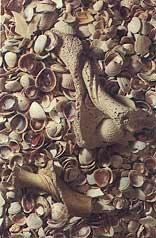
French biology, which would later have a great influence in so many places, focused on three areas: macroscopic and microscopic research of organic morphology, the relationships between organ functions and the search and origin of microorganisms.
XVIII. At the end of the 20th century the structural perspectives found their limits, giving way to a morphological vision. Along with tissue discovery, it was considered very necessary to review all prior knowledge. On the one hand, for new discoveries, because the poverty of mechanistic hypotheses was clear and, on the other, because physiological knowledge did not conform to the concept of the organism, but to that of the structure. The new idea of organic morphology, understood as the first study of the organism, allowed to overcome detailed descriptive verification.
Comparative anatomy and paleontology

In this field we must mention the name of Georges Cuviera. His work merges with the science of the past (or rather, the life of the past). Fossils and beings that have always lived in other times were known, but were not investigated. Cuvier left all this and from there gave way to paleontology.
Georges Cuvier was born in 1769 into a humble family in a small village in Müttemberg County. After some studies of Stuggart, he travels to Normandy as a teacher of the son of a count. There he began to devote himself to zoology in his free hours, carrying out tasks of collecting the local marine fauna. He collected his observations in the “Diarium zoologicum” and made his very precise images. Despite her short stay in Normandy, she had close relations with Teissier, priest and researcher. In 1794 Cuvier went very well in the French capital.
During his stay in Normandy he studied in depth the works of Aristotle, Linnaeus and Buffon. The data obtained through the dissection of invertebrates, little known at that time, obtained the chair of animated anatomy attached to the Musèum. From then on and until his death, he held many high-level positions. Among other things, it was the very innovation of the teaching entrusted by Napoleon who led the remodeling of the University.
To understand the revolution brought about by Cuvier's works, we must mention the situation of knowledge of the time. Except for the results of Linnaeus and Buffon, biology was a very unknown field. According to Buffon himself, “being expressed and painted in its entirety and its relations with man.” On the other hand, the classification of Linnaeus, despite the previous step, had many errors: it put in common some beings of different nature. The descriptive scientists of the time did not look at the internal structure of the animals. Cuvier instead dedicated himself to it. That is, Cuvier decided that his classification should start from the internal structure.
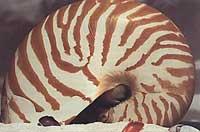
And in the first course of Musèum he pointed out his main lines: “... before entering the details of the organs, we will consider in its entirety the harmonic system of interrelation, .. Then, then, we will analyze the different combinations of relations between organs”. Musèum’s rich collection of animals classified them and published their conclusions in his book “Leçons d’anatomie comparée”. Consider that the anatomical structures of animals are governed by laws. In this sense, “Révolutions de la surface du globe” dictated in one of his most compact works laws of correlation and subordination, expressing the essence of transformist ideas.
According to Cuvier, each of the living beings forms a unique and closed system in which each part is related to the rest. Therefore, it is impossible for one party to undergo a change and the other parties do not know it. In this way, a reference point was established to guide the transformations of organic matter and the aim was to clarify the morphological differences of the different animals that are based on it. It expressed, for example, differences in the structure and composition of the teeth of carnivores and herbivores, or between the stomach and reptile of the latter.
All this motivated in a second step a new classification of living beings. Cuvier introduced the concept of “white blood” animals, i.e. invertebrates. Its classification takes as a pattern the internal structure and, despite some errors, in addition to improving the Linnaeus, allows to give details about insects and worms. Of course, this classification focused solely on the experimental method.

Again we find the identity of Cuvier in the field of paleontology. In this field of knowledge he obtained numerous results and is recognized as the founder of paleontology. As a natural consequence of comparative anatomy work he undertook the search for the skeletons of “lost animals”, as he called fossils. In principle they were investigated in some way, but the conclusions obtained were very superficial or irritating.
Shells of molluscs, for example, were known far from the sea or even on the stones images of plants, but at that time it was accepted as “ludus naturae” (games of nature) following the idea of Pliny. In that environment Bernard Palissy (and no one) dared to say that they were remains of real beings who lived there. However, he had to endure the teasing of Voltaire, since in his opinion the shells discovered were only those given by the pilgrims of Compostela. Therefore, XVIII. We will have to wait until the 20th century to see a real treatment of the hand of Buffon and Jussieu in this field. They discovered the importance of fossils especially in the evolutionary line. His views were contrasted when researcher Pallas found remains of mammals very large as mammoths on a trip to Siberia. However, one of Cuvier's greatest inventions was that his investigations, aware of the importance of shells from molluscs, were based on it.
Cuvier’s first writing on paleontology is “Memoire sur les espèces d’elèphants vivants et fossiles” (1796). There are two main ideas: the fossil elephant, although the bear, deer or rhinoceros, did not belong to the same species as those who live today, but were a consequence of the disasters of disappearance on Earth. He said: “…if anyone wonders why there are not the remains of so many animals that are not known today, they will recognize that they are remnants of beings from another world before ours (beings that have been destroyed by a world revolution) and that today they are replaced by other animals.”
Once clarified the nature of the fossils, Cuvier saw the need to carry out an exhaustive research based on place and time. For this and in order to have an adequate chronology, he became aware of the need for geological research. The work was impressive and had the help of his fellow geologist Brongniart. Once the fossils were explored, he used comparative anatomy methods, especially the principle of organ correlation. Through this first step he got huge reconstructions of ancient animals, but nevertheless, there were many questions left in the air: the disappearance of different species and the appearance of new ones.
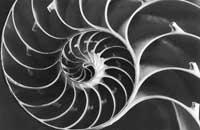
The best theory to express all this was that of evolution, that is, to recognize that species have changed over the centuries. Lamarck, which we will discuss later, laid the foundation for it, but Cuvier opposed it very violently. Perhaps his religious belief left him no other way and, if the idea of evolution is totally discarded, he only had the way to the hypothesis of the cataclysms. That is, some cataclysms cleansed the last rays of life and God put other species back on Earth.
Cuvier's work, in general, can be said that more than the result is open. Through his research and discoveries he eliminated great questions and questions, generating strong debates and opening the door to the hypothesis of transformism.
Lamarck
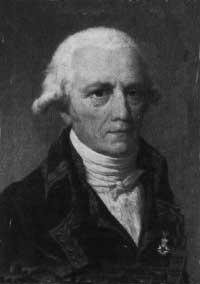
Jean-Baptiste de Monet, Knight of Lamarck was born in 1744 in a small village of Picarda. Being the eleventh son of a family of low nobility, after the first studies he worked as a military and was so brave during the Seven Years War, so he was appointed officer on the same battlefield. But a sinister accident forced him to leave the army when he was only twenty years old. He lived in Paris with little money.
There he had to dedicate himself to different professions: journalism, accounting, etc. But around 1770, apart from all of them, he began as a student of Jussieu. With immense work, he devoted himself to the anatomy and systematic of plants outside official studies. In 1778 he published his work “Flore française”. He was very well received and Jussieu, his teacher, introduced him to Buffon, who welcomed him under his tutelage. After 25 years, he was appointed a member of the Académie. At fifty years old they would give him the chair of zoology. After performing spectacular works in 1819, he was blinded by the excessive use of the magnifying glass, and in the next ten years, until his death, he had to live in a poor, dark and unknown way. It is perhaps one of the greatest injustices in the history of science.
Although we leave so late for the pathways of zoology, the results in this field are the most fruitful fruit of Lamarck. He offers a systematic anatomical research of the invertebrates of his “Histoire naturelle des animaux sans vertèbres” and explains in his “Philosophie zoologique” the first positive theory on the evolution of organic matter.
Lamarck believes that all living things are results of nature. Accepting the hypothesis of spontaneous creation, he believes that in the beginning nature created infusorios. These would be the simplest and most humble animals. From there and through continuous transformations, the rest of the species emerged until reaching the mammals. However, all species had one link or another to see the sequence of the process.
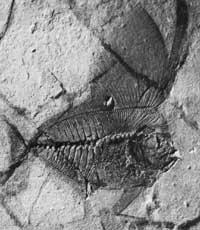
Assuming this, he had to explain how the process of evolutionary improvement occurred and had difficulties in that work. He admitted on the one hand the influence of an “internal fluid” and on the other the influence of the external. In his opinion, the very functioning of life was sufficient to improve the “living machine”, that is, even if the influence of the outside is accepted, evolution or if transformation is desired, it was actually assured by the properties of living matter.
However, changes in the parts required the passage of several generations, that is, there are no profound changes throughout the life of an organism, and it takes an interval of hundreds or thousands of years to see a change. To express it scientifically Lamarck established two principles. The first says: “The use in any animal of any organ that has not had its full development reinforces, develops, expands and reinforces this organ depending on the duration of its use. The non-use of this organ, however, weakens, deteriorates, constantly eliminates its faculties and, finally, makes the organ disappear.”
And the seconds: “Everything that nature has taken or lost to beings by the effects their race has suffered for a long time, and therefore, by the use or not of that organ, is preserved throughout the generation of new beings, as long as the changes produced refer to both sexes or creators of new beings.”
Through these two principles, he tried to express so many known examples, such as the blindness for the underground life of the mole or the disappearance of the snakes' legs as more ease was achieved to walk through the narrative.

Ultimately, Lamarck's transformist ideas can be expressed as: seeing the reality of the process of adaptation to the environment, living beings lose the excess parts and develop the most necessary ones. Therefore, in the functioning of nature it was not guided by a miraculous hand, but by laws of transformation of organic matter. For Lamarck the science of life was more than a theory, that is, real science, and he called it “biology.”
Lamarck's theory was not approved. At that time those principles for society were very hard. Because everywhere they were against religion. His main rival was Cuvier. This, as a true Protestant, was a failed reader of the Bible and, in his opinion, Lamarck's ideas erased the hand of God from the creation of the world. This, on the other hand, said that negation by itself shows nothing and that the non-validity of a single action does not rule out the existence of the phenomenon. On the other hand, although the creatures were built by God, the medium greatly affected its structure, that is, if Nature was launched, God was not able to dominate that process and went by himself. Against him Cuvier raised his voice aloud and the discussions were very harsh. These ended with the death of Cuvier, but the echo of this conflict would have its special weight in further discussions on the origin of species.
To finish the study of the most cutting-edge scientists of French biology of the time, we have to bring Geoffroy Saint-Hilaire. In his youth he worked with Cuvier in Muséum under the direction of Lamarck. The conclusion of his work was that if in the whole animal kingdom there is a plan of formation, it is very logical to think that living beings come from a single ancient being.

He was therefore closer to Lamarck than to Cuvier. Saint-Hilaire did not build the whole transformist system and only hypothesized about the constituted beings and the missing animals. However, it appears as a center of great importance: It is like the link between the theories of Lamarck and Darwin.





